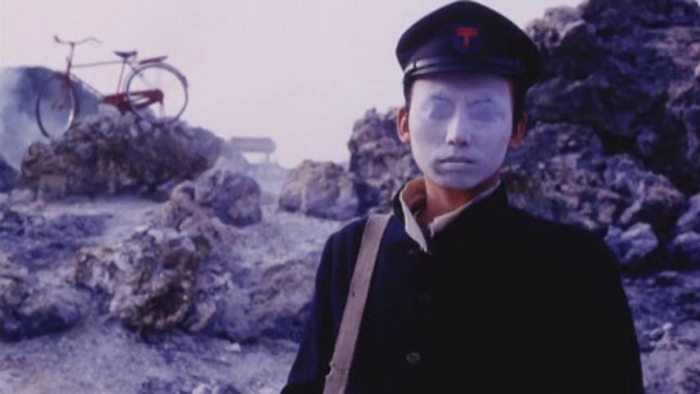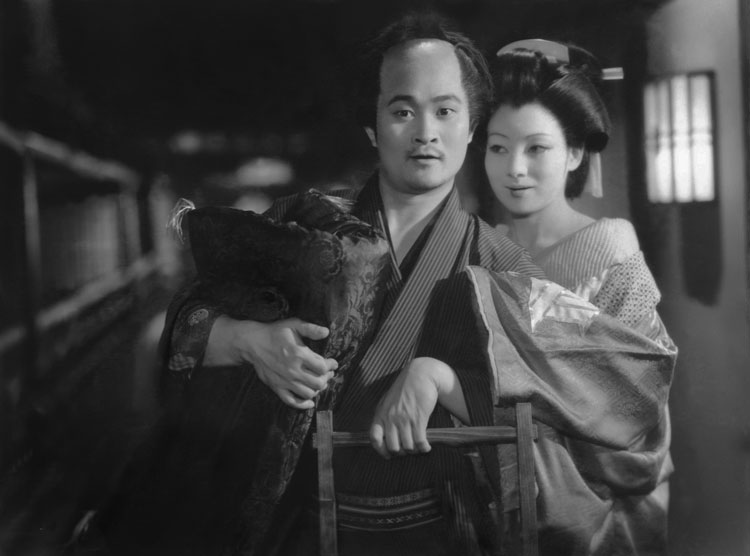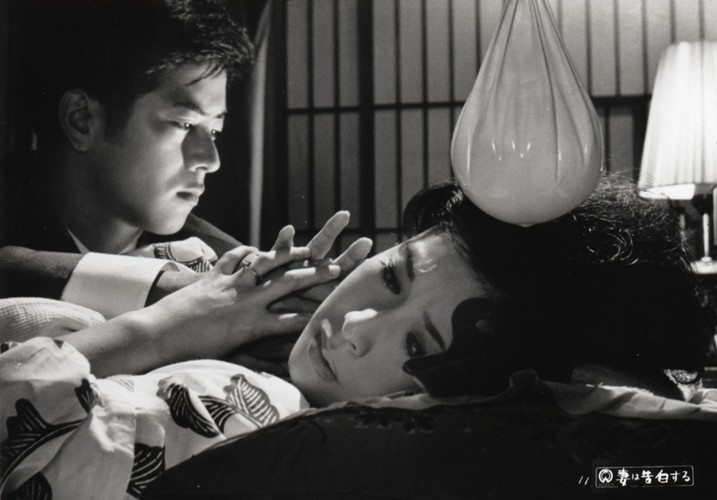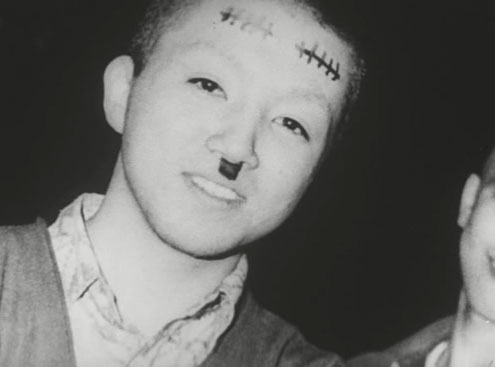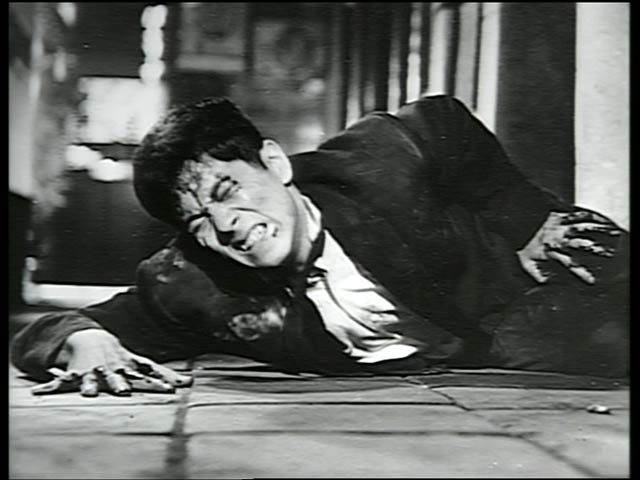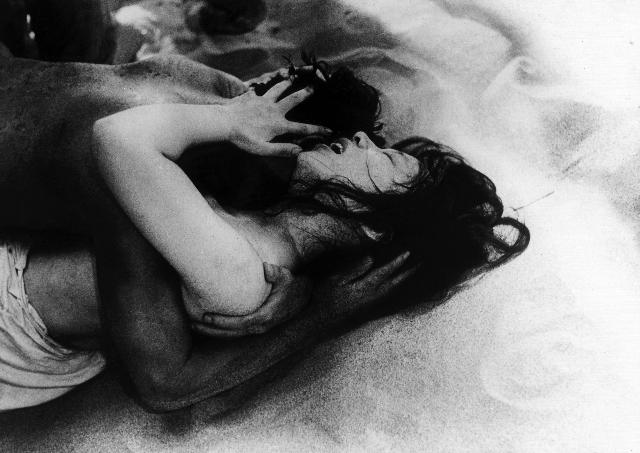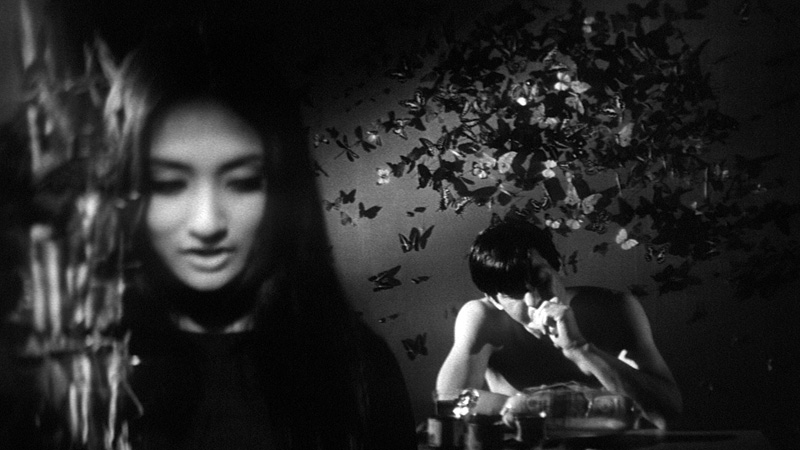The Japanese New Wave or ‘Nuberu Bagu’ was a film movement that occurred in Japan from the mid-1950s to the early 1970s and completely changed the way the world previously saw Japanese cinema.
The world of “academia” usually prescribes Japan’s golden age of cinema to that of the 1930s to 1950s. From the period pieces of Kenji Mizoguchi and Akira Kurosawa, to the poetic social realism of Yasujiro Ozu, Shimizu Hiroshi, Mikio Naruse, Yasujiro Shimazu and Heinosuke Gosho. Until recently, this presupposition that great Japanese cinema ended in the 1950s has resulted in new wave movies being overlooked for their serious contribution to the world of film.
Unlike most ‘new waves’, this was bred from within the studio system and escalated from there. Also, the idea that Nuberu Bagu was a successor of the French new wave is a fallacy, this being evident in the fact that both movements ran alongside each other at the same time.
Most of the films associated with the new wave were Jazz like in both their spirit and technique. They were wild and unrestricted, yet still maintained a sense of technical control and finesse. Taboo leitmotifs of the time were addressed in an unapologetic fashion; themes of incest, rape, copious sex, homosexuality, nihilism, anti-academia, free love, revolution, subculture and voyeurism were abundant.
Amongst the controversial themes that are sometimes falsely interpreted as misogynistic, the movement also gave rise to powerful female roles and subject matters. But most of all, there is a transcendent quality to this period of Japanese cinema, which embodies not only an era, but a spirit that only the cinema could properly accomplish. The Japanese new wave was not just a national artistic revolution, but an example of the power of film when it’s fuelled by raw emotion and sincerity.
To give this list a sense of balance and keep it to a twenty film minimum, I have chosen one movie per director.
20. The Sun Legend Of The End Of The Tokugawa Era (Yûzô Kawashima, 1957)
Despite being one of the lighter toned films associated with the new wave, it still embodies the provocative anti-establishment satire that ran deep within this period of Japanese cinema. Instead of focusing on a group of rebellious teens, a characteristic typically found in Nuberu Bagu films, “The Sun Legend” concentrates on a group of rebellious samurais during the nineteenth century. The samurais are struggling to survive and vent out their frustration by attempting to kill any foreigners that cross paths with them.
As the title states, the film is set during the twilight of the Shogunate period and observes the devastating affects it had on samurais at the time. Particularly Japan’s developing westernization, which is what the samurais blame for their hardship, and what eventually encourages them to bomb the mansion of a wealthy foreigner.
In many ways it links to Sadao Yamanaka’s masterpiece “Humanity & Paper Balloons”, especially regarding its themes of struggling samurais towards the end of the Shogunate era. In 1999 the Kinema Junpo magazine voted it the fifth best Japanese film of all time, the poll was based on the vote of a variety of Japanese critics and filmmakers.
19. A Wife Confesses (Yasuzo Masumura, 1961)
This may not the be the most popular Yasuzo Masumura film to add to this list, but unlike his other new wave relevant movies like “Giants and Toys (1958)” or “Red Angel (1966)”, “A Wife Confesses” shows a different side to the movement.
The film is a court-room drama that centres on a trial where a seemingly kind widow (beautifully performed by Ayako Wakao) is accused of killing her older husband. It appears suspicious because if cleared, the accused will inherit five million yen from her deceased husband’s insurance and to make matters worse, she was having an affair with another man prior. The case becomes even more complicated when we find out her husband apparently was aware of the affair and approved it.
It’s a clever and empathetic portrait of the then modern Japanese woman; and brilliantly addresses the existential themes relating to gender, guilt and voyeurism. Like many of the films from the Nuberu Bagu movement, it uses an elliptical narrative structure and forces us as an audience to challenge the reliability of linear judgment.
18. God Speed You! Black Emperor (Mitsuo Yanagimachi, 1976)
“God speed you! Black Emperor” is the youngest film mentioned in this list and was released when most critics feel the new wave was ending.
The film is a ninety minute black-and-white documentary about the activities of young Japanese motorcyclists, known at the time as ‘Black Emperors’. During the 1970s a motorcycling movement manifested in Japan known as ‘bosozoku’, which at the time was made a spectacle of by the media.
The story follows one particular member of the Black Emperors and observes his daily exploits, particularly the relationship he has with his parents after getting in trouble with the police.
Despite the film depicting a later period of Japanese society compared to the other films mentioned in this list, it still captures the same themes and vitality. Especially the complicated perception Japan’s older generations had towards the youth, which was made up of a contrasting mix of hopefulness and terror.
17. Punishment Room (Kon Ichikawa, 1956)
Even if you have a casual interest in the world of Japanese cinema, you would most likely have come across the work of legendary director Kon Ichikawa. From his spiritual anti-war masterpiece “The Burmese Harp”, to the cult favourite “An Actor’s Revenge”, Ichikawa has produced some of the most technically magnificent films in Japanese cinema.
“Punishment Room” maybe not have the acclaim of other Ichikawa films like “Fires of the Plain”, but was much more intrinsic to the ethos and sensibility of the new wave. The film studies the violent gang culture connected with the Japanese youth in the 1950’s and like most of the work from this movement, it is riddled with nihilism and social pessimism.
The film revolves around a university student called Katsumi, who rebels and disrespects those around him. Whether it’s his diligent parents, his lecturers, or friends and peers, Katsumi shows no respect for anyone. As an anti-hero, he pushes his protagonist likeability grade as far as it can go, even to the extent of drugging and raping a girl from his class.
16. Woman In The Dunes (Hiroshi Teshigahara, 1964)
Arguably the most internationally renowned Japanese new wave film and consistently shows up in “greatest Japanese film” polls from all over the world. This esteem is not undeserved; “Woman in the Dunes” is one of the most atmospheric and proficiently crafted films ever made. It was also nominated for two academy awards and won the Special Jury Prize at the Cannes Film Festival.
Based on the tour de force novel by Japanese writer (and inventor) Kobo Abe and follows an entomologist who searches a remote seaside location for insect specimens. The scientist is captured by local villagers and forced to live with a strange widow who digs up sand for them. As the film progresses the trapped man develops complex feelings for the woman, so much so he chooses to stay with her, even when the perfect opportunity to escape arises.
As with most new wave films, the theme of escaping society is extremely potent, but rather than using anarchically fuelled observations of 1950s/60s Japan, “Woman in the Dunes” adopts a more fable-like framework.
15. Branded To Kill (Seijun Suzuki, 1967)
“Branded to kill” is the most fun you can have whilst simultaneously being challenged. The film has been referenced so many times in other movies it is difficult to keep track. Despite the low budget, its production quality and stylized cinematography is breath-taking.
The plot follows a contract killer called Goro Hanada, who aspires to be the ‘Number One’ assassin. Goro falls for one of his clients, a mysterious woman called Misako who asks him to perform an incredibly dangerous job. After failing the mission he is hunted down by the current ‘Number One’ killer, who uses psychological mind games to lure Goro to his death.
Out of all the filmmakers even remotely associated with the new wave, Seijun Suzuki is one of the most accessible, which could explain why he is quite possibly the most recognizable name in this list.
“Branded to kill” is without a doubt one of the coolest films ever made and influenced an array of contemporary filmmakers; big names like Quentin Tarantino, Nicolas Winding Refn, Jim Jarmusch, John Woo and Chan-wook Park are among them.
